Boosting Small Molecule Production in Super “Soup”
Researchers describe a two-pronged approach that starts with engineered yeast cells but then moves out of the cell structure into a cell-free system. [Read More]
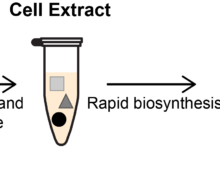 Researchers describe a two-pronged approach that starts with engineered yeast cells but then moves out of the cell structure into a cell-free system. [Read More]
Researchers describe a two-pronged approach that starts with engineered yeast cells but then moves out of the cell structure into a cell-free system. [Read More] Ian Rambo conducted part of his graduate work at the JGI through the DOE Office of Science Graduate Student Research (SCGSR) program. [Read More]
Ian Rambo conducted part of his graduate work at the JGI through the DOE Office of Science Graduate Student Research (SCGSR) program. [Read More]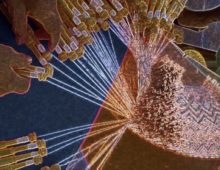 A special issue of Synthetic Biology celebrates research enabled by the JGI DNA Synthesis Science Program. [Read More]
A special issue of Synthetic Biology celebrates research enabled by the JGI DNA Synthesis Science Program. [Read More] JGI’s plant data portal team highlights the latest Phytozome update while assuring users will continue to have straightforward access to the existing data and features. [Read More]
JGI’s plant data portal team highlights the latest Phytozome update while assuring users will continue to have straightforward access to the existing data and features. [Read More]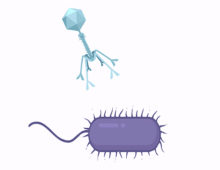 A genetic element that enables rapid, targeted mutation is surprisingly widespread and appears to allow viruses to hunt new microbial prey. [Read More]
A genetic element that enables rapid, targeted mutation is surprisingly widespread and appears to allow viruses to hunt new microbial prey. [Read More]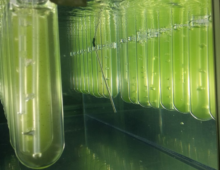 A collaborative approach highlights how a screening and characterization pipeline could help accelerate algae biotechnology research efforts. [Read More]
A collaborative approach highlights how a screening and characterization pipeline could help accelerate algae biotechnology research efforts. [Read More]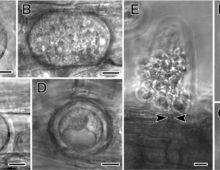 In this guest blog: a behind-the-paper look at the fungus Olpidium, a link in the evolution and transition of fungi from aquatic to terrestrial habitats. [Read More]
In this guest blog: a behind-the-paper look at the fungus Olpidium, a link in the evolution and transition of fungi from aquatic to terrestrial habitats. [Read More] Montana State University graduate student Nick Reichart spent a year at the JGI through the DOE Office of Science Graduate Student Research (SCGSR) program. [Read More]
Montana State University graduate student Nick Reichart spent a year at the JGI through the DOE Office of Science Graduate Student Research (SCGSR) program. [Read More] While thousands of species of fungi and bacteria dwell on — and within — the forest floor, who’s recycling the plant biomass? [Read More]
While thousands of species of fungi and bacteria dwell on — and within — the forest floor, who’s recycling the plant biomass? [Read More]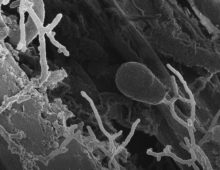 Combing through the genomes of four anaerobic fungal species has revealed, for the first time, that this group is unexpectedly powerful: they can whip up dozens of complex natural products, including new ones. [Read More]
Combing through the genomes of four anaerobic fungal species has revealed, for the first time, that this group is unexpectedly powerful: they can whip up dozens of complex natural products, including new ones. [Read More]